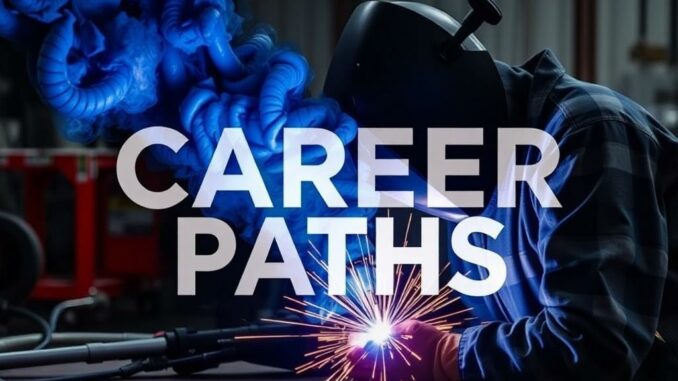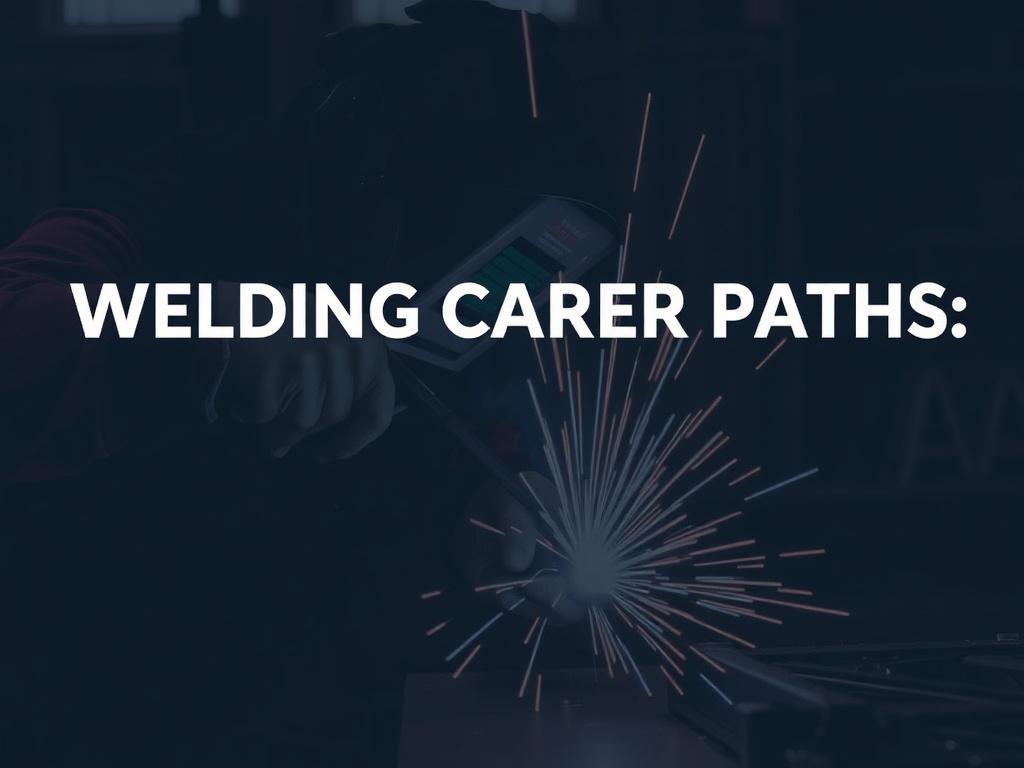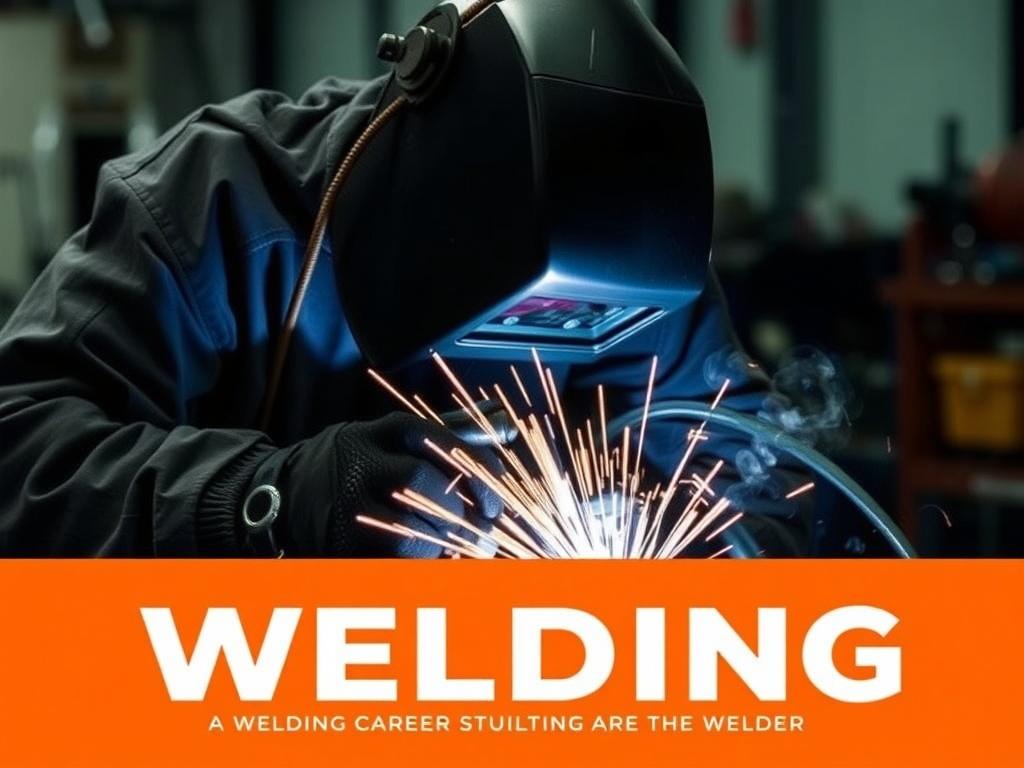
Welding is a skilled trade that has been the backbone of many industries for decades. From constructing towering skyscrapers to fabricating intricate metal art, welding opens a world of opportunities. If you’re considering a career in welding or looking to advance your skills, understanding the various welding career paths available is essential. This comprehensive guide will take you through each step of the journey—from a beginner welder to a master welder—and show you how to build a rewarding and successful career in this dynamic field.
What is Welding? Understanding the Basics
Before diving into career paths, it’s important to grasp what welding actually is. Welding is a fabrication process that joins materials, usually metals or thermoplastics, by applying heat, pressure, or both to create a strong bond. Unlike simple mechanical joining methods like riveting or using adhesives, welding essentially fuses the materials together, creating a permanent and durable connection.
There are several different welding techniques, including:
- Arc Welding: Uses an electrical arc to melt the materials and filler metal.
- TIG Welding (Tungsten Inert Gas): Employs a non-consumable tungsten electrode along with a shielding gas.
- MIG Welding (Metal Inert Gas): Utilizes a continuously fed wire electrode and shielding gas.
- Stick Welding: Also known as Shielded Metal Arc Welding (SMAW), uses a consumable electrode coated in flux.
- Plasma Arc Welding: Uses an ionized gas to create a welding arc and is often used for delicate material.
Each welding technique has its unique applications, advantages, and challenges, offering different career opportunities to those who specialize in them.
The Appeal of a Welding Career
You might be wondering why so many people choose welding as a career. Welding offers a blend of financial security, hands-on work, and opportunities for advancement that few other trades can match. The demand for skilled welders is consistently high across various industries such as manufacturing, construction, automotive, aerospace, and shipbuilding.
Besides demand, welding provides flexibility. Whether you enjoy working outdoors on large construction projects, or prefer the precision of crafting fine metal pieces in a shop environment, welding can cater to your interests. Additionally, many welding jobs offer competitive salaries, benefits, and the potential to travel or even work internationally.
But perhaps the most rewarding part of a welding career is the tangible results you create. There is immense satisfaction in seeing a massive beam or a detailed component come together through your skill and effort.
Reasons to Consider a Welding Career:
| Benefit | Description |
|---|---|
| Job Security | High demand for skilled welders ensures steady employment opportunities worldwide. |
| Good Income | Many welding jobs offer above-average wages with benefits and overtime pay. |
| Hands-on Work | Perfect for those who prefer physical, tangible work versus desk jobs. |
| Variety of Industries | Welders are needed in manufacturing, construction, automotive, aerospace, and more. |
| Career Advancement | Pathways exist from entry-level roles to highly specialized and supervisory positions. |
| Travel Opportunities | Many welders work on projects around the globe, especially in industries like offshore oil. |
Starting Out: The Beginner Welder

Every master welder starts as a beginner. If you’re interested in welding but have no prior experience, you’ll want to begin by learning the fundamental skills and gaining hands-on practice. This initial phase is crucial because it builds the foundation for all your future advancement.
How to Begin Your Welding Journey
1. Education: Most welders start by enrolling in a welding program at a trade school, community college, or vocational training center. These programs typically span from a few months to two years and provide a mix of classroom instruction and practical training. Common subjects covered include welding safety, metallurgy, welding symbols, reading blueprints, and basic welding techniques.
2. Apprenticeships: Some beginners go straight into an apprenticeship where they work under experienced welders on job sites. Apprenticeships allow you to learn on the job while earning a wage and often lead to certification readiness.
3. Entry-Level Jobs: Many new welders start in basic welding roles such as production welders in factories or assistant welders on construction sites. These jobs focus on repetitive welds and improve your speed and accuracy.
Key Skills for Beginner Welders
- Safety awareness: Welding involves hazards such as fumes, sparks, and intense light, so understanding safety protocols is essential.
- Manual dexterity: Steady hands and good hand-eye coordination help you make precise welds.
- Basic welding techniques: Learning to manipulate the welding torch and control the weld bead.
- Reading welding symbols and blueprints: Helps you understand design requirements.
At this stage, patience and practice are your best friends. Expect mistakes and be willing to learn continuously.
Building Proficiency: Becoming a Skilled Welder
Once you have mastered beginner-level skills, the next step involves gaining more advanced techniques and certifications. Skilled welders can perform a variety of welds in different positions and with multiple materials. By this stage, you should be comfortable with standard protective gear and prepared to tackle complex projects.
Certifications and Training
Certification is a critical credential that boosts your employability and proves your skills. The American Welding Society (AWS) offers one of the most respected certifications. Some common certifications include:
- Certified Welder (CW)
- Certified Welding Inspector (CWI)
- Certified Welding Educator (CWE)
- Certified Welding Supervisor
Each certification requires passing hands-on tests and sometimes written examinations. Many employers require welders to have or be working towards certification, particularly for specialized welding jobs.
Specialization Options
At this stage, it’s wise to consider specializing in a specific welding process or industry. Common specialties include:
- TIG welding for aerospace materials: Known for precision and cleanliness.
- MIG welding in automotive manufacturing: Fast and efficient for high-volume work.
- Pipe welding in oil and gas: Requires proficiency in welding cylindrical shapes with corrosion-resistant materials.
- Structural welding: Used in buildings, bridges, and infrastructure.
Each has its own nuances and challenges, but gaining expertise can significantly increase your earning potential and job satisfaction.
Pathway to Master Welder: Leading the Field
Reaching the status of a master welder is a significant achievement. It means you have mastered a wide range of welding techniques, materials, and applications, and possess the ability to instruct, supervise, or inspect other welders. The journey to the top is demanding but incredibly rewarding.
What Makes a Master Welder?
- Expertise in multiple welding processes and materials.
- Ability to read and interpret complex blueprints and specifications.
- Leadership and mentoring skills.
- Certification as a Certified Welding Inspector or Welding Educator.
- Experience in problem-solving and quality assurance.
Master welders often take on high-responsibility roles such as project managers, welding supervisors, or inspectors. They may work closely with engineers and architects to ensure welding meets the required standards and specifications. Some even start their own welding businesses or consultancy services.
Advancing Your Career as a Master Welder
Master welders have many avenues for growth, including:
- Continuing Education: Taking advanced welding courses, metallurgy studies, or management training.
- Training and Mentorship: Teaching apprentices, conducting safety seminars, or leading workshops.
- Management Positions: Supervising teams on large industrial projects.
- Consultation Roles: Providing expert advice for welding procedures and troubleshooting defects.
Many organizations and industries recognize master welders as invaluable assets on critical projects.
Emerging Trends in Welding Careers

Welding technology continues to evolve at a rapid pace, offering exciting opportunities for welders willing to learn new skills. Current trends shaping welding career paths include:
- Automation and Robotics: Robots assist with high-volume and precision welding, but skilled welders are needed to program, maintain, and supervise these machines.
- Advanced Materials: New alloys and composite materials require specialized welding knowledge.
- Green Welding: Environmentally friendly welding processes are gaining importance within sustainable construction.
- Remote Welding: Developing technologies allow welders to operate equipment remotely, opening possibilities in hazardous environments.
By keeping up with these trends, welders can future-proof their careers and tap into innovative industries.
Challenges Welders Face and How to Overcome Them
While welding offers many rewards, it’s not without its challenges. Understanding these hurdles can help you prepare and succeed.
Common Challenges:
| Challenge | Description | How to Overcome |
|---|---|---|
| Physical Demands | Welding often requires bending, lifting, and working in uncomfortable positions. | Maintain good physical fitness, use ergonomic equipment, and take regular breaks. |
| Health Risks | Exposure to fumes, sparks, and UV rays can be hazardous. | Strictly follow safety protocols and wear personal protective equipment (PPE). |
| Skill Competency | Learning complex techniques takes time and practice. | Enroll in courses, get certified, and seek mentorship. |
| Job Market Fluctuations | Work availability can vary depending on industry cycles. | Diversify your skills and consider multiple certifications. |
Developing professionalism, punctuality, and communication skills also helps welders stand out in competitive job markets.
Tools and Equipment Every Welder Should Know

Being familiar with your tools is a foundation of any successful welding career path. Here’s an overview of essential equipment every welder should master:
- Welding Machines: Such as stick welders, MIG welders, and TIG welders.
- Protective Gear: Helmets, gloves, jackets, and respirators to ensure safety.
- Hand Tools: Wire brushes, chipping hammers, clamps, and grinders.
- Measuring Tools: Tape measures, welding gauges, squares, and calipers.
- Filler Materials: Various rods and wires needed based on the welding technique and material.
Welders who maintain their equipment well and stay up to date on new tools have a clear advantage in quality and efficiency.
Industries Where Welding Careers Thrive
Welding is indispensable in multiple sectors. Knowing where your skills can be applied is important when plotting your career path.
Top Industries Hiring Welders
| Industry | Description | Common Welding Applications |
|---|---|---|
| Construction | Building infrastructure such as bridges, buildings, and highways. | Structural welding, reinforcement bars, steel beams. |
| Manufacturing | Producing consumer goods, machinery, and equipment. | Fabrication, assembly lines, automotive factories. |
| Oil & Gas | Extraction and refining, pipeline installation. | Pipe welding, corrosion-resistant materials. |
| Aerospace | Building aircraft and spacecraft. | TIG welding of lightweight alloys, precise joining. |
| Shipbuilding | Construction and repair of ships and submarines. | Heavy plate welding, underwater welding. |
Each industry offers different challenges and rewards, allowing welders to carve out a niche that suits their skills and interests.
How to Keep Growing Your Welding Career
The journey from beginner to master welder doesn’t end once you reach mastery—it’s an ongoing process. To keep your career thriving, consider the following tips:
- Stay Educated: Welding technology and standards evolve; taking refresher courses or certifications is vital.
- Network: Join professional organizations like the American Welding Society to connect with peers and learn about opportunities.
- Practice Regularly: Hands-on practice sharpens your skills and keeps you sharp.
- Embrace New Technologies: Learn about automation, robotics, and digital inspection tools.
- Consider Teaching: Sharing your knowledge can also open doors to new career opportunities.
Conclusion: Welding—A Skilled Career with Limitless Potential
From the first sparks of a beginner welder to the mastery of advanced techniques and leadership, welding offers a deeply satisfying career path. It combines creativity, technical skill, and tangible results that few professions can match. Whether your dream is to build sprawling infrastructure, manufacture essential equipment, or craft precision components, welding provides the tools and career pathways to make it happen.
With dedication, continuous learning, and a passion for metalwork, anyone can rise from a beginner to a master welder, opening doors to stable, diverse, and rewarding job opportunities. If you are ready to ignite your career and shape the future—both literally and figuratively—the welding world is waiting for you.
Remember, every master was once a beginner. So pick up your helmet, learn the craft, and start welding your way to success.
